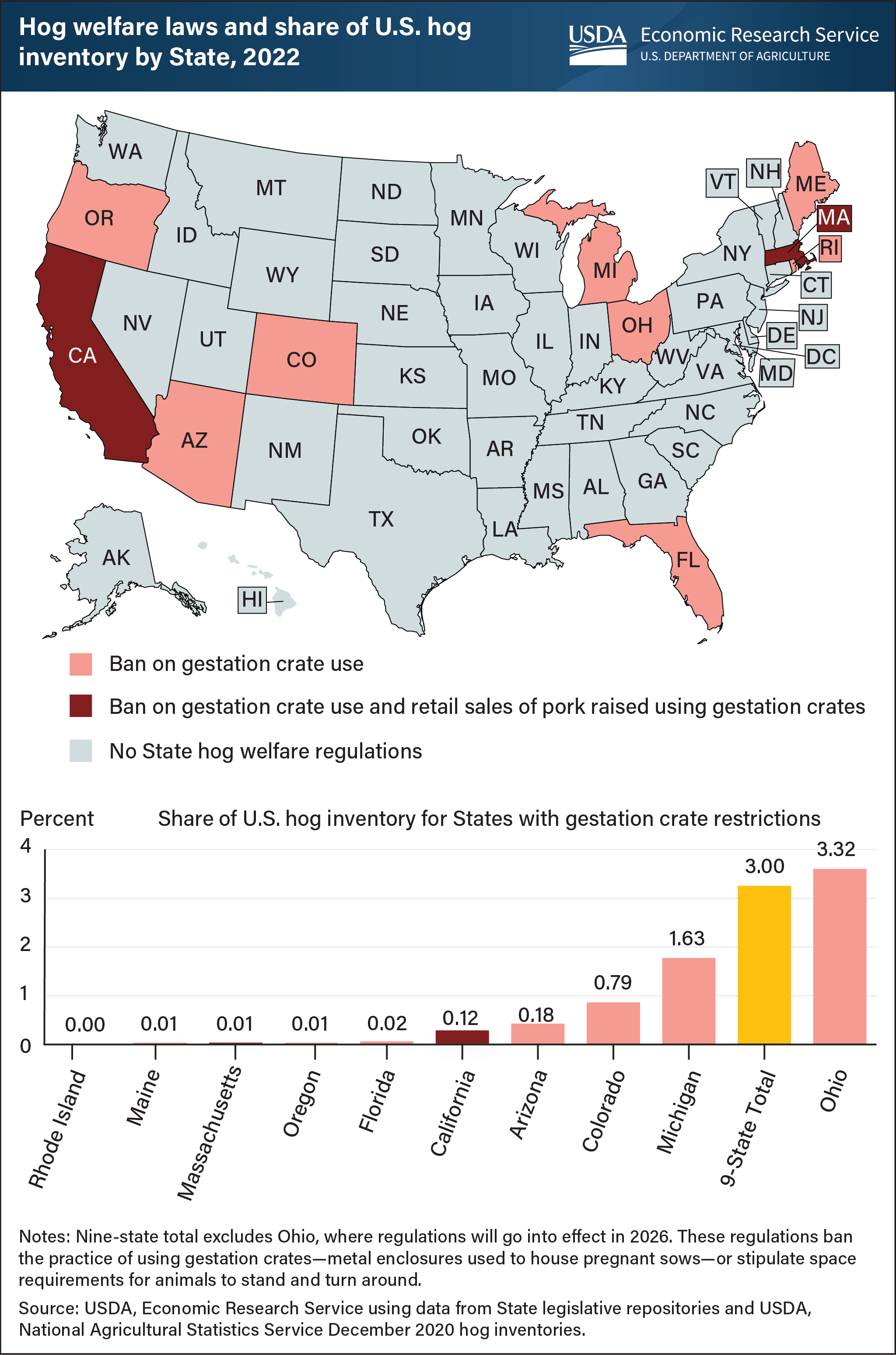Hog welfare laws cover 9 States and 3 percent of the national herd in 2022
- by Danielle J. Ufer
- 3/16/2022

Over the past two decades, multiple States have passed animal welfare regulations in hog production. These regulations ban the common practice of using gestation crates—metal enclosures used to house pregnant sows—or stipulate space requirements for animals to stand and turn around. In addition to restrictions during production, two of these States, California and Massachusetts, passed retail sales restrictions that prohibit the sale of pork originating from animals kept in gestation-crate systems or their direct offspring. Hog welfare regulations are concentrated in States with relatively small pork industries. The proportion of the national herd covered by gestation crate bans is currently estimated at 3 percent based on expected production in 2022. Except for Michigan, each State with existing bans on gestation crates has produced, on average, less than 1 percent of total U.S. pork production (in pounds) since 2018. Ohio will become the largest hog-producing State to ban gestation crates when its regulations go into effect in 2026. Based on State hog inventories in December 2020, projected coverage of the total U.S. hog herd and the breeding herd is expected to remain below 10 percent of hogs and pigs under current State regulations through 2026. This chart is drawn from “State Animal Welfare Policies Covering U.S. Pork Production,” in the February 2022 Livestock, Dairy, and Poultry Outlook from USDA’s Economic Research Service.


